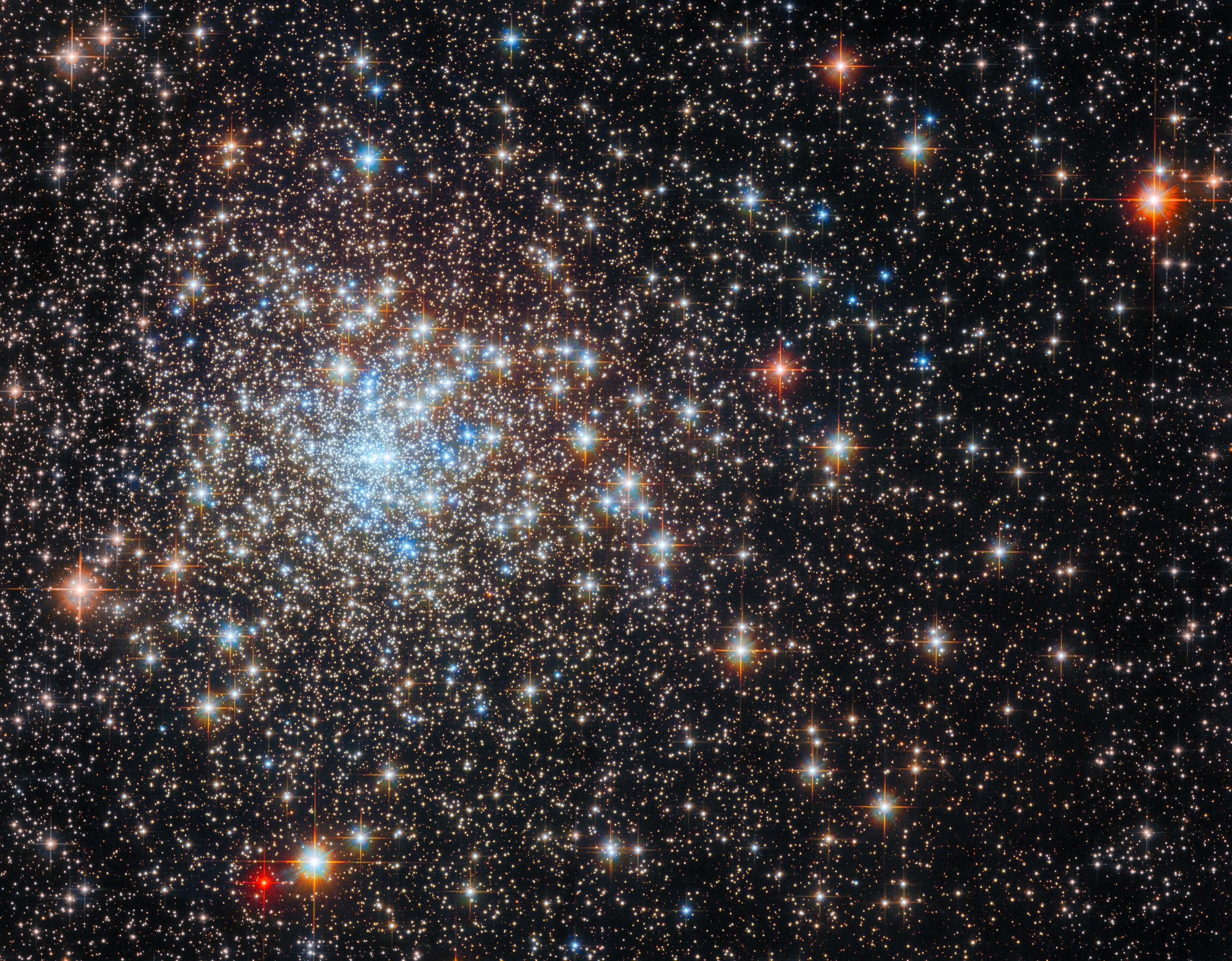Hubble telescope hunts for a black hole among a brilliant field of stars (photo)
Astronomers are looking for something else in this cluster that is much more elusive than its densely packed stars.

The Hubble Space Telescope has captured a stunning image of a distant cluster of stars that could help us better understand how such collections evolve and potentially even reveal the elusive black holes at their hearts.
Globular clusters like the one in this Hubble Space Telescope image, known as NGC 6325, can contain between tens of thousands to millions of stars and are found across all types of galaxies. The Milky Way itself is home to around 180 known globular clusters.
Because all the stars in a globular cluster are believed to have formed at the same time from the same collapsing cloud of gas and dust, studying them can teach astrophysicists a great deal about how stars form and evolve. But astronomers are looking for something else in NGC 6325 much more elusive than its densely packed stars: A compact cosmic titan called an intermediate-mass black hole. The search for specimens of this class is an important one, as astronomers still don't quite know how they are are born.
Related: Black holes: Everything you need to know
Astronomers are no strangers to the universe's largest black holes, having been able to detect a wealth of stellar mass black holes with masses of between around three and 10 times that of the sun. These stellar mass black holes form when the core of a single star collapses under its own gravity at the end of its hydrogen-burning lifetime.
Scientists have even been able to capture direct images of supermassive black holes with masses as great as billions of times that of the sun which dwell at the heart of most large galaxies. These supermassive black holes are believed to be born when black holes collide and merge with other black holes, with these mergers increasing in size.
Even with all of these discoveries, intermediate-mass black holes have proved elusive. These medium-sized black holes have masses between 100 and 10,000 times that of the sun.
Get the Space.com Newsletter
Breaking space news, the latest updates on rocket launches, skywatching events and more!
No single star can be massive enough to collapse and birth an intermediate-mass black hole. Intermediate-mass black holes, instead, are thought to also grow by gathering mass, but this may be due to stellar mass black holes greedily feeding on the material surrounding them, like gas, dust or even stars that venture too close to them.
Investigations of NGC 6325 and other globular clusters have revealed that the distribution of stars throughout them differs from what astronomers would expect. Because intermediate black holes would have a tremendous gravitational influence that would affect the motion of stars around them, studying these clusters in detail could hint at their presence.
If an intermediate black hole does indeed lurk within NGC 6325 at the globular cluster's heart, then images like the one Hubble produced could finally reveal them, granting astronomers a better idea of how globular clusters and these medium-sized monsters grow.
Join our Space Forums to keep talking space on the latest missions, night sky and more! And if you have a news tip, correction or comment, let us know at: community@space.com.

Robert Lea is a science journalist in the U.K. whose articles have been published in Physics World, New Scientist, Astronomy Magazine, All About Space, Newsweek and ZME Science. He also writes about science communication for Elsevier and the European Journal of Physics. Rob holds a bachelor of science degree in physics and astronomy from the U.K.’s Open University. Follow him on Twitter @sciencef1rst.









